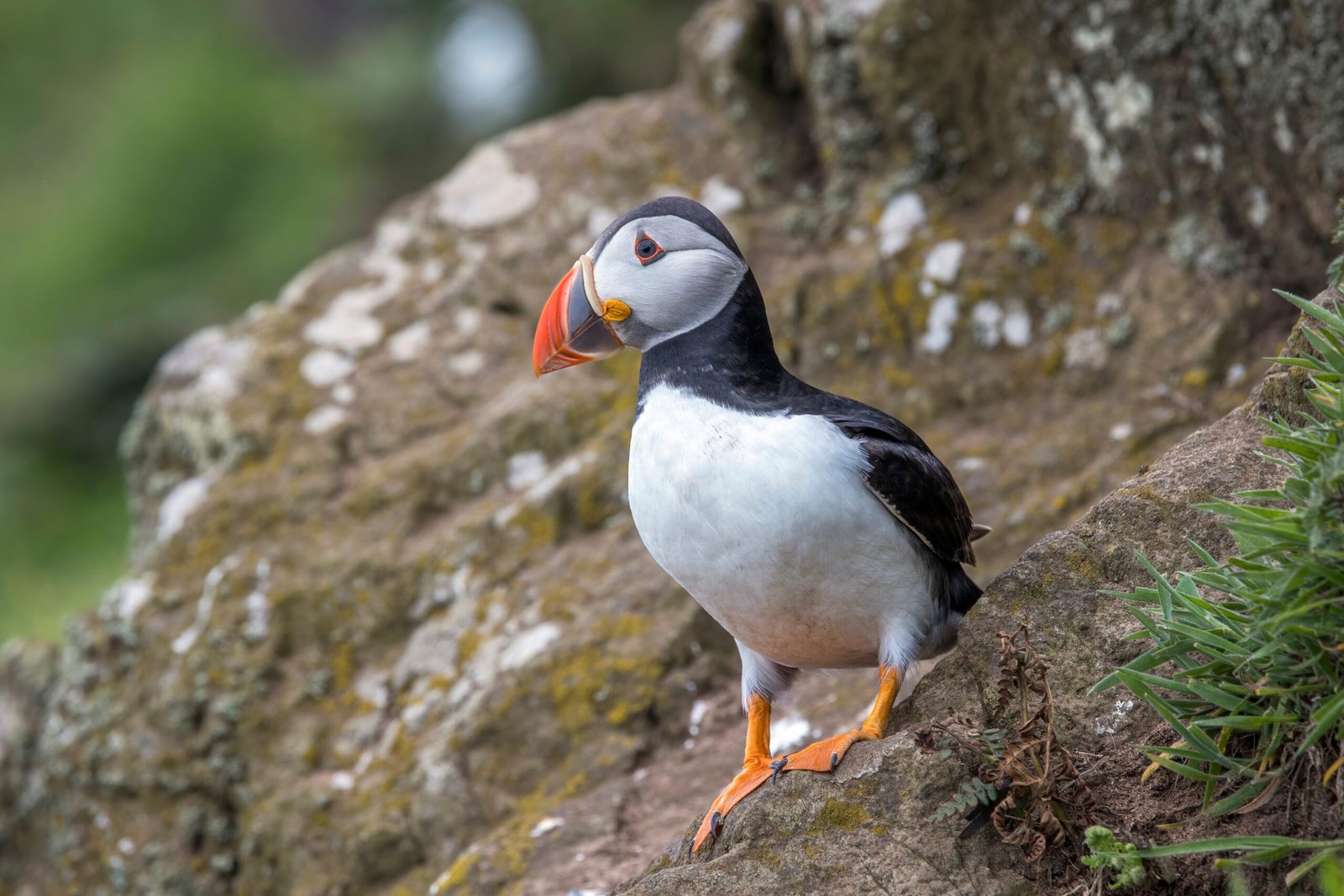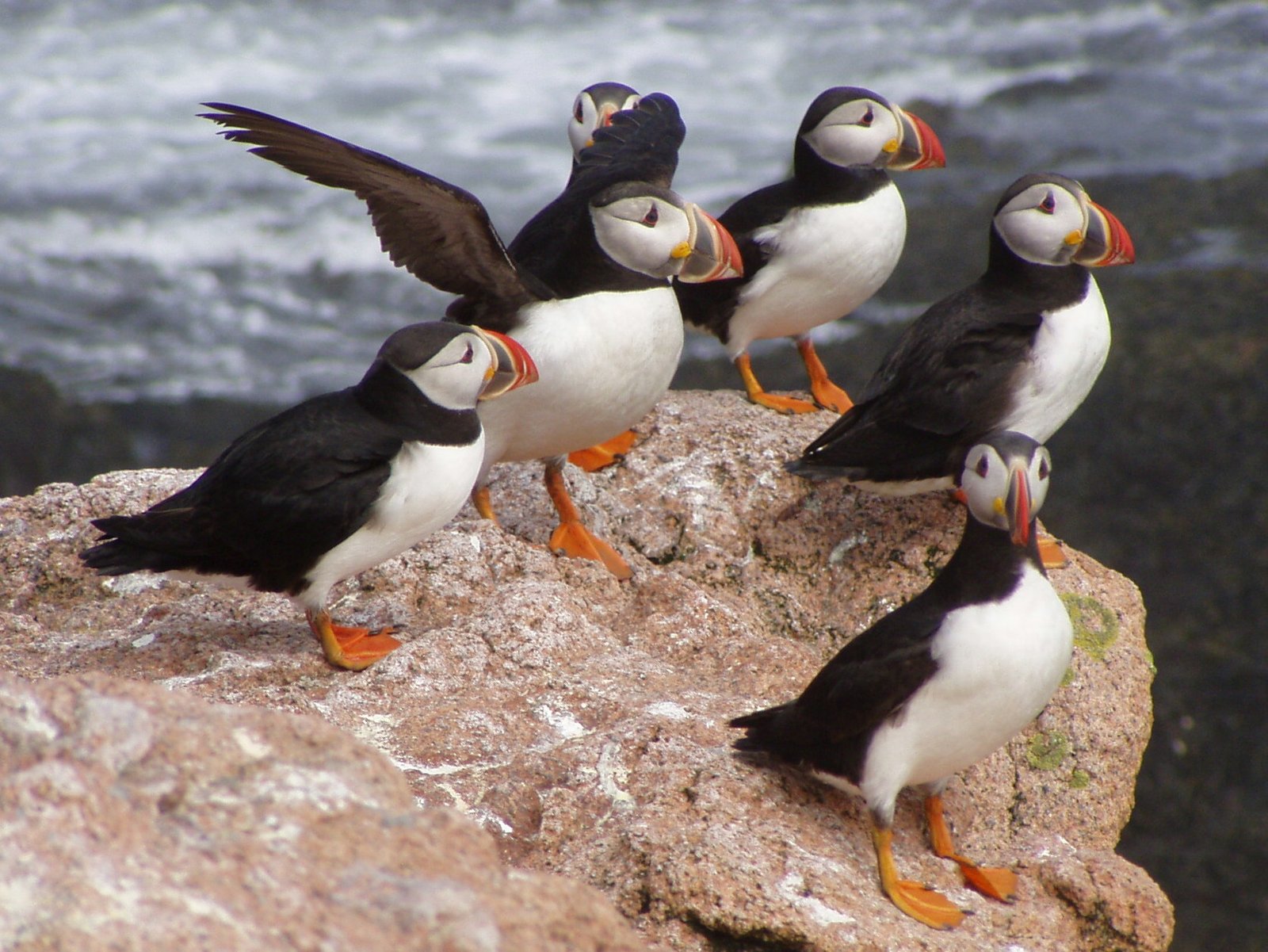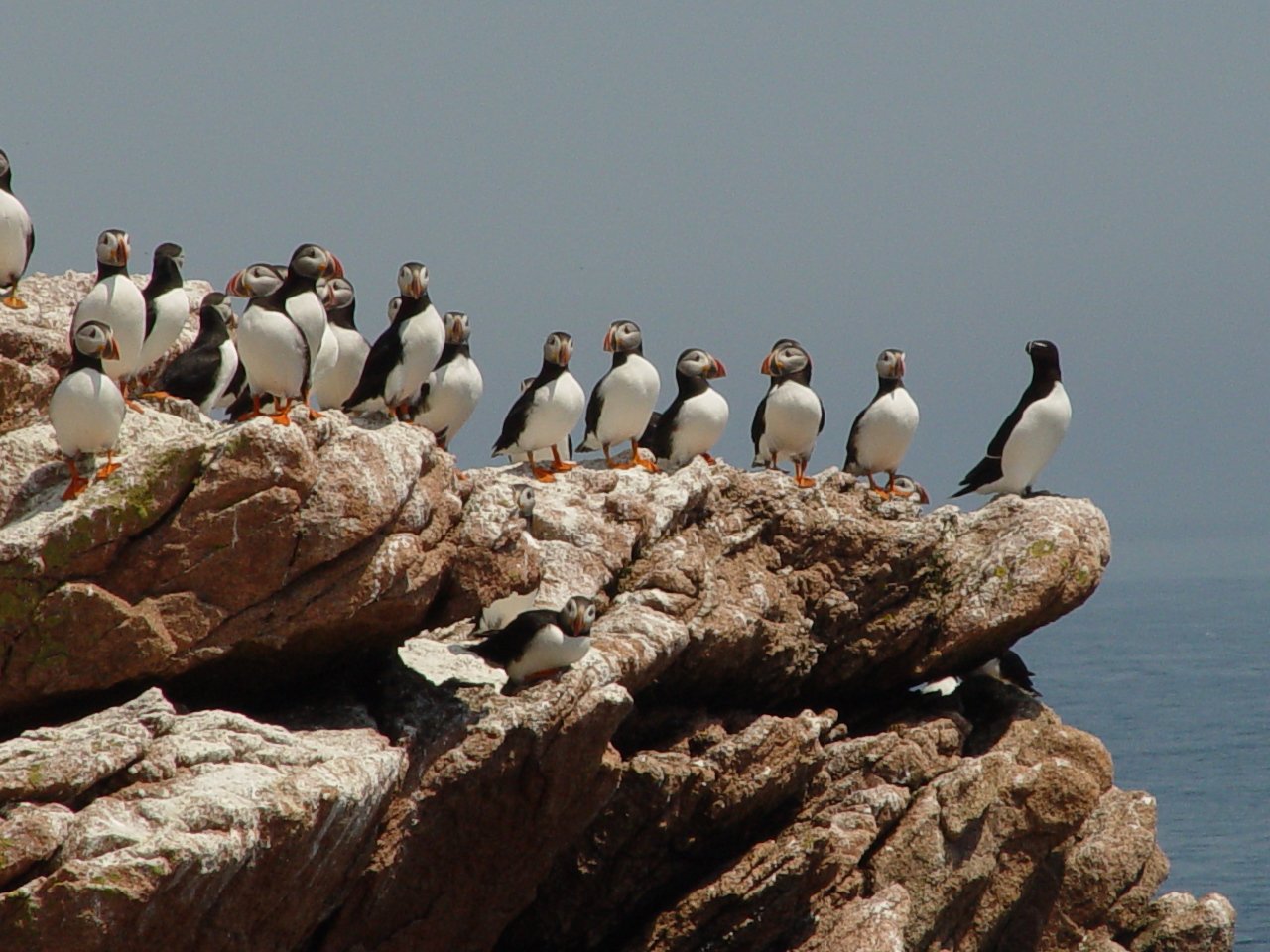Imagine a bird with the intelligence to use tools and the heart to form lifelong bonds. Enter the world of puffins, the charismatic seabirds that are full of surprises. Known for their colorful beaks and waddling gait, puffins are more than just adorable creatures; they are fascinating subjects of study in animal behavior. Their ability to use tools and their commitment to lifelong partnerships make them truly unique in the avian world. But how do these tiny seabirds achieve such feats? Let’s dive into the incredible lives of puffins and explore their intriguing behaviors.
The Colorful World of Puffins

Puffins are often recognized by their vivid, multicolored beaks and striking black-and-white plumage. These birds are found in the chilly waters of the North Atlantic Ocean, where they spend much of their time at sea. Despite their comical appearance, puffins are skilled flyers and swimmers, capable of diving deep beneath the waves to catch fish. Their bright beaks are not just for show; they play a crucial role during the breeding season, attracting mates and establishing territory. This vibrant appearance is a testament to their adaptability and survival in harsh environments.
Tool Use: A Rare Skill Among Birds
The notion of birds using tools is a fascinating one, and puffins have been observed exhibiting this rare behavior. In a surprising discovery, scientists have documented puffins using sticks to scratch themselves. This behavior, although simple, suggests a level of problem-solving ability that is uncommon in the avian world. Not only does this demonstrate their intelligence, but it also challenges the traditional view of birds as creatures driven solely by instinct. Puffins, with their tool-using abilities, have earned a spot among the ranks of the most intelligent birds.
Love That Lasts: Puffin Partnerships
When it comes to love, puffins are nothing short of remarkable. These birds are known to form lifelong bonds with their mates, returning to the same breeding sites year after year. This monogamous behavior is rare in the animal kingdom, where many species opt for new partners each season. For puffins, loyalty is key, and their long-term partnerships are built on cooperation and shared parenting duties. By working together, puffin pairs can successfully raise their chicks in the challenging conditions of their coastal habitats.
Raising a Puffin Family

Puffin parenting is a joint effort, with both parents sharing the responsibility of incubating eggs and feeding their young. These seabirds nest in burrows on steep cliffs, providing a safe haven for their chicks away from predators. Once the chicks hatch, the parents take turns bringing back fish to feed their hungry offspring. This teamwork is crucial for the survival of the chicks, as the harsh weather and limited food supply can make rearing young a daunting task. Through their combined efforts, puffin parents ensure the next generation has the best chance at survival.
Communication: More Than Just a Cute Call
Puffins are not just silent spectators in their environment; they are vocal communicators, using a variety of sounds to interact with each other. From soft coos to loud squawks, these birds have a rich vocal repertoire that serves multiple purposes. Communication is vital during the breeding season, helping pairs coordinate their efforts and defend their territory. Beyond vocalizations, puffins also use body language, such as head bobbing and wing flapping, to convey messages. This sophisticated communication system is a testament to their social nature and complex interactions.
Adaptations for Survival
Living in the harsh conditions of the North Atlantic requires a range of adaptations, and puffins are well-equipped for the challenge. Their waterproof feathers keep them dry and insulated during long hours at sea, while their webbed feet make them excellent swimmers. Puffins have also developed specialized bills that allow them to carry multiple fish at once, a crucial adaptation for feeding their chicks efficiently. These physical traits, combined with their behavioral strategies, enable puffins to thrive in a demanding environment.
Threats and Conservation Efforts

Despite their resilience, puffins face numerous threats in the wild, from climate change to overfishing. These factors have led to declining puffin populations in some areas, prompting conservationists to take action. Efforts to protect puffin habitats and regulate fishing practices are crucial to ensuring their survival. Public awareness campaigns and research initiatives aim to highlight the importance of preserving these charismatic birds and their ecosystems. By understanding the challenges puffins face, we can work towards safeguarding their future.
Puffins and Human Fascination
Puffins have long captured the imagination of people around the world, inspiring countless stories, artworks, and even mascots. Their endearing appearance and intriguing behaviors make them popular subjects for wildlife enthusiasts and researchers alike. Puffin tourism has become a significant industry in some regions, offering people the chance to observe these birds up close in their natural habitats. This human fascination with puffins underscores the connection we feel with the natural world and the importance of preserving it for future generations.
The Future of Puffins
As we look to the future, the fate of puffins is uncertain but hopeful. Continued research and conservation efforts are essential in protecting these remarkable birds and their habitats. By addressing the challenges they face, we can help ensure that puffins continue to thrive in the wild. These seabirds serve as a reminder of the beauty and complexity of the natural world, and their story is one of resilience and adaptation. As we learn more about puffins, we gain a deeper appreciation for the delicate balance of life on our planet.
In conclusion, puffins are more than just charming seabirds; they are intelligent, social creatures with a remarkable capacity for tool use and lifelong partnerships. Their story is one of survival and adaptation, a testament to the wonders of the natural world. As we continue to explore and understand these fascinating birds, we are reminded of the importance of conservation and the role we play in preserving the beauty and diversity of our planet. What will the future hold for puffins, and how can we ensure their continued presence in the wild?

Jan loves Wildlife and Animals and is one of the founders of Animals Around The Globe. He holds an MSc in Finance & Economics and is a passionate PADI Open Water Diver. His favorite animals are Mountain Gorillas, Tigers, and Great White Sharks. He lived in South Africa, Germany, the USA, Ireland, Italy, China, and Australia. Before AATG, Jan worked for Google, Axel Springer, BMW and others.


